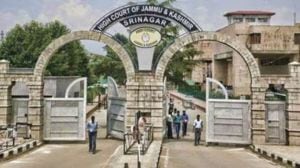India decides to ratify Kigali Amendment to Montreal Protocol
The Kigali Amendment, named after the Rwadan capital where it was negotiated, enables the phase-out of hydroflurocarbons, a set of chemicals notorious for their capacity to warm the planet.
 Ozone layer is at a height of 15 to 35 km from the surface of the earth. This layer absorbs about 95-97 per cent of the UV rays. (Source: Pixabay)
Ozone layer is at a height of 15 to 35 km from the surface of the earth. This layer absorbs about 95-97 per cent of the UV rays. (Source: Pixabay)Following similar decisions by the United States and China in the past few months, India on Wednesday decided to ratify a key amendment to the 1989 ozone-saving Montreal Protocol negotiated five years ago. The Kigali Amendment, named after the Rwadan capital where it was negotiated, enables the phase-out of hydroflurocarbons, a set of chemicals notorious for their capacity to warm the planet.
The 2016 amendment was seen as one of the most important breakthroughs in the global efforts to fight climate change, because the HFCs, a set of 19 gases used extensively in the air-conditioning and refrigerant industry, are known to be hundreds, even thousands, of times more potent than carbon dioxide in their ability to cause global warming. It is estimated that a complete phase-out of HFCs by 2050 would prevent about 0.5 degree Celsius rise in global temperatures by the end of this century.
This important instrument, therefore, is crucial to achieving the target of restraining the increase in global temperatures to 2 degree Celsius from pre-industrial times. As pointed out by a recent report of the Intergovernmental Panel on Climate Change (IPCC), the average temperatures of the planet has already risen by about 1.1 degree Celsius.
The 1989 Montreal Protocol is not a climate agreement. It is instead aimed at protecting the earth from ozone-destroying chemicals like the chlorofluorocarbons, or CFCs, that were earlier used in the air-conditioning and refrigerant industry. The widespread use of CFCs had caused a hole in the Ozone layer of the atmosphere, which allowed some harmful radiations to reach the earth. These radiations were considered potential health hazards. The Montreal Protocol led to the replacement of CFCs with HFCs which do not destroy the Ozone layer. But they were later found to be extremely potent in causing global warming. So, the HFCs solved one problem, but were contributing in a major way in another. But theses could not be eliminated under the original provisions of Montreal Protocol which was meant to phase-out ozone-destroying chemicals only. The Kigali Amendment enabled the Montreal Protocol to mandate the elimination of HFCs as well.
The decision to ratify the amendment was taken at a meeting of the Union Cabinet on Wednesday. It comes close on the heels of similar decisions by the United States and China, the world’s largest producers and consumers of HFCs. According to a recent factsheet issued by Natural Resources Defense Council (NRDC), a US-based environmental organisation, and The Energy and Resources Institute (TERI), 122 countries had ratified the Kigali Amendment by the end of July.
Under the Kigali amendment, the United States, China and India are in separate group of countries, with different time schedules to phase out their HFCs and replace them with climate-friendly alternatives. India has to reduce its HFC use by 80 per cent by the year 2047, while China and the United States have to achieve the same target by the year 2045 and 2034 respectively.
India on Wednesday said it will draw up a national strategy for phase-down of HFCs by the year 2023 in “consultation with all industry stakeholders”. It said that existing domestic laws that govern the implementation of the Montreal Protocol would be amended by the middle of 2024 to facilitate the HFC phase-down. India’s reductions have to begin only after 2028.







